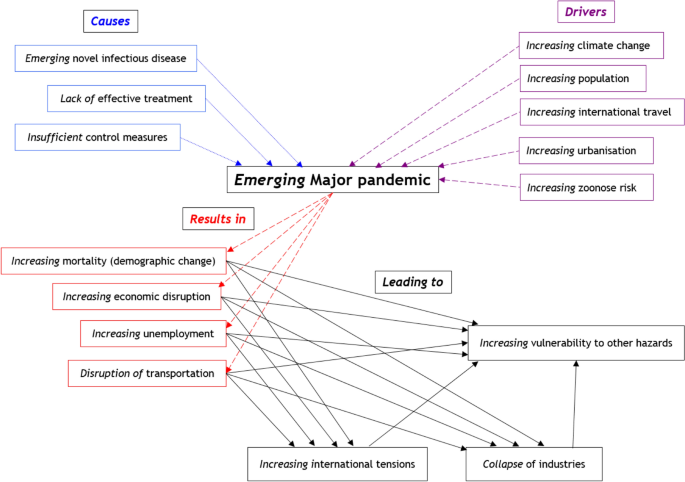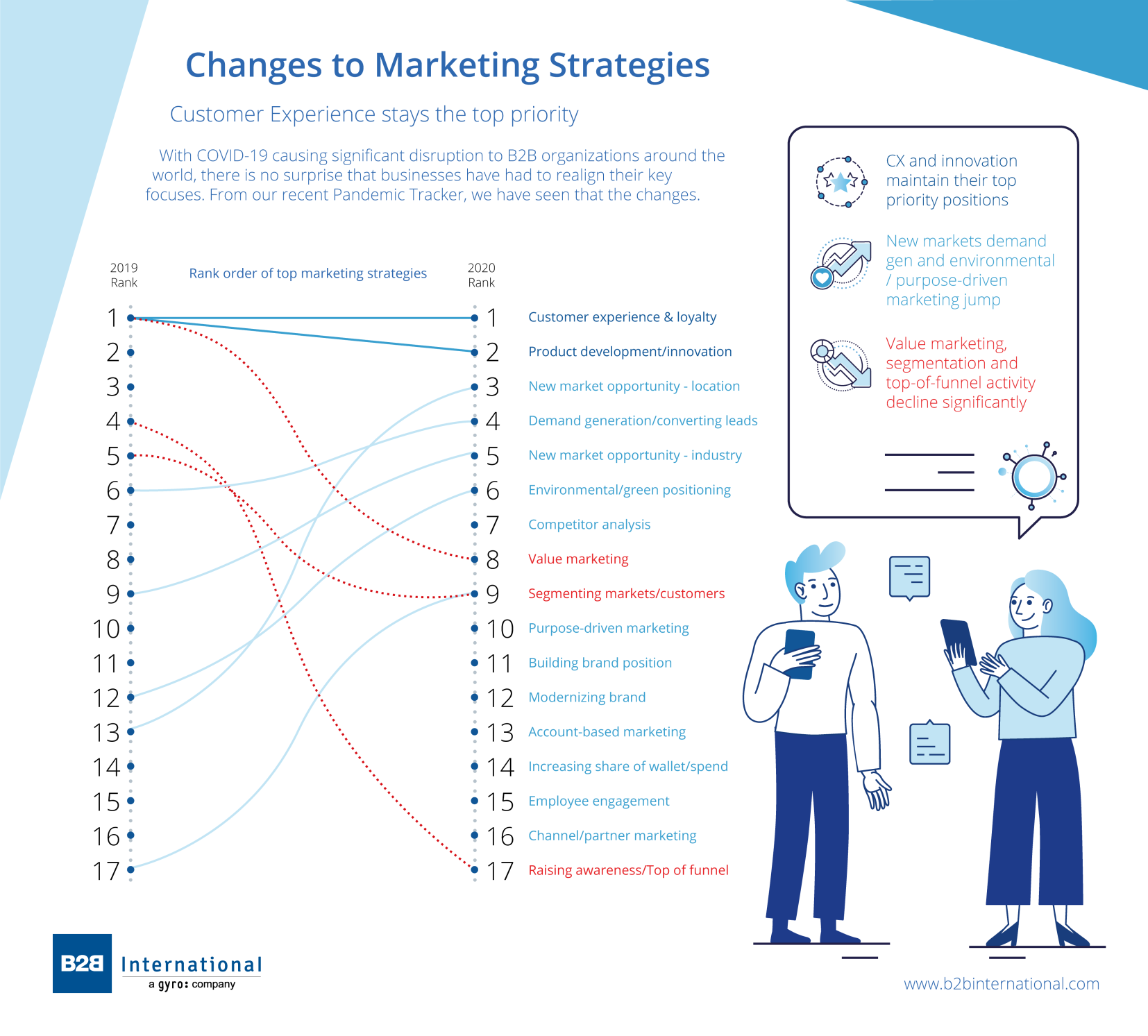Navigating Pandemics: Effective Risk Management Strategies

Unraveling the Complexities of Pandemic Risk Management
The emergence of a pandemic presents a multifaceted challenge that demands a strategic and comprehensive approach to risk management. As organizations grapple with the uncertainties brought about by global health crises, effective pandemic risk management becomes an indispensable tool in navigating the complexities of these unprecedented times.
Understanding the Dynamic Nature of Pandemic Risks
Pandemic risks are inherently dynamic, evolving with the progression of a health crisis. To effectively manage these risks, organizations must first understand the fluid nature of the threat. This involves continuous monitoring of global health data, staying abreast of emerging variants, and anticipating the potential impacts on various aspects of operations.
Proactive Preparedness: A Cornerstone of Risk Management
The old adage “prevention is better than cure” rings particularly true in the realm of pandemic risk management. Proactive preparedness involves establishing robust contingency plans, ensuring a resilient supply chain, and implementing measures to safeguard the health and well-being of employees. A well-prepared organization is better equipped to weather the challenges posed by a pandemic.
Data-Driven Decision-Making in Uncertain Times
In the face of a pandemic, data becomes a powerful ally in risk management. Analyzing epidemiological data, monitoring infection rates, and utilizing predictive modeling aid organizations in making informed decisions. Data-driven insights contribute to the development of effective strategies, ensuring a nimble and adaptive response to evolving circumstances.
Flexibility as a Key Component of Risk Mitigation
The ability to adapt and pivot swiftly is a hallmark of effective pandemic risk management. Organizations must embed flexibility into their operations, allowing for rapid adjustments to changing circumstances. This includes flexible work arrangements, adaptable supply chain strategies, and contingency plans that can be activated promptly in response to emerging risks.
Employee Well-Being as a Priority in Risk Mitigation
Managing pandemic risks extends beyond operational considerations to encompass the well-being of employees. Prioritizing mental health, providing support mechanisms, and fostering a culture of open communication contribute to a resilient workforce. A healthy and supported team is better equipped to navigate the challenges posed by a pandemic.
Supply Chain Resilience in the Face of Disruptions
Pandemics can disrupt supply chains on a global scale. Ensuring supply chain resilience involves diversifying suppliers, maintaining adequate inventory levels, and establishing alternative sourcing strategies. A resilient supply chain mitigates the impact of disruptions, ensuring continuity in operations even in the face of widespread challenges.
Scenario Planning for Contingency Preparedness
Effective pandemic risk management includes scenario planning to anticipate and prepare for a range of potential outcomes. This proactive approach allows organizations to identify vulnerabilities, assess the impact of various scenarios, and implement preemptive measures. Scenario planning enhances the organization’s ability to navigate uncertainties with agility and resilience.
Communication Strategies for Transparency and Assurance
Transparent communication is integral to pandemic risk management. Clear and timely communication fosters trust among employees, stakeholders, and the broader community. Providing regular updates, addressing concerns openly, and ensuring accessibility to accurate information contribute to a cohesive and informed response to the risks posed by a pandemic.
Continuous Evaluation and Learning for Future Preparedness
The culmination of effective pandemic risk management involves continuous evaluation and learning. After navigating a crisis, organizations must reflect on their responses, identify areas for improvement, and integrate lessons learned into future risk management strategies. This iterative process enhances an organization’s overall resilience and preparedness for future pandemics.
To delve deeper into the intricacies of pandemic risk management, visit Pandemic Risk Management. As organizations confront the challenges of global health crises, a proactive and adaptive approach to risk management becomes a cornerstone of resilience. By understanding the dynamic nature of pandemic risks and implementing comprehensive strategies, organizations can not only navigate current crises but also fortify themselves for the uncertainties of the future.
Ensuring Business Continuity Amidst the Pandemic Challenges

Navigating Business Continuity Amidst the Pandemic Challenges
The COVID-19 pandemic has brought unprecedented challenges to businesses worldwide. Ensuring business continuity in the face of such uncertainties has become a top priority. Organizations are adopting strategic measures to adapt, survive, and thrive in this dynamically changing landscape.
Resilience through Remote Work Adoption:
One of the key strategies for business continuity during the pandemic has been the widespread adoption of remote work. Companies quickly transitioned to remote work models, leveraging technology to maintain operations. This shift not only ensured employee safety but also showcased the adaptability of businesses in the face of adversity.
Digital Transformation as a Pillar of Continuity:
Embracing digital transformation has proven to be a critical pillar for business continuity. Companies that invested in technology found themselves better equipped to navigate disruptions. Cloud computing, digital collaboration tools, and e-commerce platforms have played pivotal roles in enabling seamless operations and customer engagement, even in the most challenging times.
Supply Chain Resilience and Diversification:
The pandemic exposed vulnerabilities in global supply chains, prompting businesses to reassess and enhance their supply chain strategies. Building resilience through diversification, local sourcing, and strategic partnerships became essential. This shift aimed to mitigate the impact of disruptions and ensure a steady flow of goods and services.
Financial Planning and Adaptive Budgeting:
Financial stability is fundamental to business continuity. Companies focused on adaptive budgeting, revisiting financial plans, and exploring cost-saving measures. Financial agility allowed businesses to weather the storm, ensuring the availability of resources for essential operations and strategic initiatives.
Crisis Communication and Stakeholder Management:
Effective communication during a crisis is paramount. Businesses prioritized transparent and timely communication with employees, customers, and stakeholders. Managing expectations and demonstrating a commitment to transparency fostered trust and goodwill, essential elements for maintaining business continuity in times of uncertainty.
Business Continuity Pandemic: A Holistic Approach
In the pursuit of business continuity during the pandemic, adopting a holistic approach is imperative. Combining remote work strategies, digital transformation initiatives, supply chain resilience, financial planning, and effective communication creates a comprehensive framework to navigate the challenges posed by the ongoing global crisis.
To explore more insights on Business Continuity during the Pandemic, visit Business Continuity Pandemic for valuable resources and guidance.
Innovation as a Driver of Continuity:
Innovation emerged as a driving force behind business continuity. Companies that embraced innovation found new ways to deliver products and services, often discovering untapped opportunities. Adapting to market shifts and consumer behavior changes became integral to sustaining operations and maintaining relevance.
Employee Well-being and Organizational Culture:
Prioritizing employee well-being and nurturing a resilient organizational culture contributed significantly to business continuity. Companies that invested in supporting their employees’ mental health, providing flexibility, and fostering a sense of belonging witnessed increased productivity and loyalty, further ensuring continuity during challenging times.
Preparing for Future Uncertainties:
As businesses navigate the current challenges, preparing for future uncertainties remains a constant consideration. Scenario planning, risk assessments, and continuous improvement strategies are essential components of building resilience. Proactively addressing potential disruptions positions businesses to respond effectively and ensure continuity in the face of unforeseen challenges.
Conclusion:
Ensuring business continuity during the pandemic requires a multifaceted approach that encompasses remote work, digital transformation, supply chain resilience, financial planning, crisis communication, innovation, employee well-being, and proactive preparation for future uncertainties. By embracing these strategies, businesses can not only survive the current challenges but also thrive in a rapidly changing global landscape.
Remote Evolution: Adapting Work in the Pandemic

The Swift Transition: Remote Work in the Pandemic Era
The onset of the global pandemic necessitated a rapid shift in work dynamics, leading to the widespread adoption of remote work. This abrupt transition prompted organizations worldwide to rethink and adapt their strategies to accommodate a remote workforce. The agility with which businesses adapted to this new normal became a testament to resilience in the face of unprecedented challenges.
Technological Overhaul: Enabling Seamless Connectivity
Central to the success of remote work adaptations was a technological overhaul. Organizations invested in robust digital infrastructure, collaboration tools, and secure communication platforms. This technological leap was essential for creating an environment where employees could seamlessly connect, collaborate, and maintain productivity, regardless of physical locations.
Flexibility Redefined: Embracing Remote Work Structures
Adapting to remote work required a redefinition of traditional notions of flexibility. Remote work adaptations went beyond merely allowing employees to work from home; they involved a shift in mindset and the establishment of flexible work structures. Organizations embraced results-driven approaches, focusing on outcomes rather than rigid working hours, fostering a culture of trust and autonomy.
Employee Well-Being: Prioritizing Mental Health and Work-Life Balance
As the remote work landscape evolved, organizations recognized the importance of prioritizing employee well-being. Remote work adaptations extended beyond professional aspects to consider the mental health and work-life balance of employees. Initiatives such as virtual wellness programs, flexible schedules, and clear communication channels aimed to support employees in maintaining a healthy work-life integration.
Collaborative Culture: Nurturing Connection in a Virtual World
Maintaining a sense of connection and collaboration became pivotal in remote work adaptations. Organizations actively fostered a collaborative culture through virtual team-building activities, regular video meetings, and digital collaboration platforms. These initiatives aimed to recreate the camaraderie of an in-person workplace and mitigate the potential feelings of isolation among remote team members.
Security Imperative: Safeguarding Digital Workspaces
With the shift to remote work, ensuring the security of digital workspaces became a paramount concern. Organizations implemented robust cybersecurity measures to safeguard sensitive data and protect against potential cyber threats. This adaptation involved not only technological solutions but also comprehensive training programs to educate employees on best practices for maintaining a secure remote work environment.
Adaptive Leadership: Guiding Teams through Uncertainty
Adapting to remote work required adaptive leadership that could guide teams through the uncertainty of the pandemic. Leaders embraced a more empathetic and communicative approach, recognizing the unique challenges faced by remote team members. Transparent communication, regular check-ins, and responsive leadership became essential components of remote work adaptations.
Continuous Learning: Upskilling for a Digital Future
Recognizing the digital shift as a long-term transformation, organizations prioritized continuous learning and upskilling initiatives. Remote work adaptations meant equipping employees with the necessary digital skills to thrive in a virtual environment. Online training programs, virtual workshops, and mentorship opportunities became integral to building a workforce prepared for the challenges of a digital future.
Agile Policies: Embracing Change for Ongoing Success
Successful remote work adaptations were characterized by organizations embracing agile policies that could evolve with changing circumstances. The ability to adapt policies and practices in response to feedback, technological advancements, and emerging trends ensured ongoing success in the remote work landscape. Flexibility in policies became a cornerstone for sustaining productivity and employee satisfaction.
Future of Work: Shaping a Hybrid Landscape
As organizations navigated the challenges of remote work adaptations, they began envisioning a future of work that embraced a hybrid model. The experiences gained during the pandemic informed strategies for creating a flexible work environment that combines the benefits of remote work with in-person collaboration. This hybrid landscape aims to provide employees with choices that suit their individual preferences and the needs of the organization.
To explore more about remote work adaptations, visit Remote Work Pandemic Adaptations. The journey of adapting to remote work during the pandemic has been transformative, pushing organizations to reconsider their structures and strategies. The lessons learned from these adaptations will likely shape the future of work, creating a more flexible, technology-enabled, and people-centric work environment.
Business Resilience: Strategic Adaptations in Pandemic Era

Introduction
The global pandemic has reshaped the business landscape, necessitating strategic adaptations for survival and growth. This article explores the innovative and resilient business strategies that have emerged in response to the challenges posed by the pandemic, highlighting the agility and creativity demonstrated by businesses in navigating these unprecedented times.
Agile Business Models
In the face of uncertainty, businesses have embraced agile models that prioritize flexibility and adaptability. Agile business strategies allow companies to pivot swiftly in response to changing market conditions. This approach has proven crucial in navigating disruptions and identifying new opportunities amid the evolving business environment.
Digital Transformation Acceleration
The pandemic accelerated the pace of digital transformation across industries. Businesses rapidly adopted and expanded digital technologies to facilitate remote work, enhance customer experiences, and streamline operations. This shift has not only improved efficiency but has also positioned companies to thrive in the digital age by embracing e-commerce, virtual collaboration, and data-driven decision-making.
Diversification of Revenue Streams
Recognizing the vulnerability of relying on a single revenue stream, many businesses diversified their income sources. Companies explored new product lines, entered untapped markets, or enhanced existing offerings to cater to changing consumer needs. Diversification has become a strategic imperative for building resilience against economic uncertainties.
Emphasis on E-commerce and Online Presence
With lockdowns and social distancing measures in place, businesses placed a heightened emphasis on bolstering their e-commerce capabilities and online presence. Establishing a robust online platform became not only a means of survival but also a way to reach a broader audience and adapt to shifting consumer behaviors.
Supply Chain Resilience
The pandemic exposed vulnerabilities in global supply chains, prompting businesses to reassess and fortify their supply chain resilience. Companies have focused on building more transparent, flexible, and localized supply networks to mitigate disruptions and ensure a steady flow of goods and services.
Focus on Employee Well-being and Remote Work Policies
Recognizing the importance of a healthy and engaged workforce, businesses implemented strategies to prioritize employee well-being. Remote work policies, flexible scheduling, mental health support, and initiatives to foster a positive work culture became integral to sustaining a motivated and productive team in the remote work era.
Innovation and Productivity Enhancements
The need to adapt to the “new normal” prompted businesses to innovate and enhance productivity. Companies invested in technologies that facilitate collaboration, automation, and innovation. This strategic focus on productivity improvements not only ensures operational efficiency but also positions businesses for sustained growth in dynamic markets.
Community Engagement and Social Responsibility
Businesses have increasingly recognized the importance of community engagement and social responsibility. Initiatives supporting local communities, environmental sustainability, and social causes have become integral parts of corporate strategies. These efforts not only contribute to the greater good but also resonate positively with consumers.
Financial Planning and Risk Management
The pandemic underscored the significance of robust financial planning and risk management. Businesses that weathered the storm effectively had proactive financial strategies in place, including contingency planning, cost control measures, and scenario analysis. This strategic financial resilience positioned them to navigate uncertainties and seize opportunities.
Conclusion with Link
In conclusion, the dynamic and challenging business environment brought about by the pandemic has catalyzed transformative strategies. For further insights into navigating the evolving business landscape and implementing effective strategies, visit The Healthy Consumer website. Explore resources for business resilience and stay informed about the latest strategies shaping the future of business.
Navigating Remote Work: Pandemic Adaptations

Remote work has undergone significant transformations in response to the challenges posed by the global pandemic. As organizations worldwide adapted to the new normal, several key adjustments became integral for the successful implementation of remote work strategies.
Embracing Virtual Collaboration Tools:
The first and foremost adaptation in the remote work landscape during the pandemic involved the widespread adoption of virtual collaboration tools. Platforms like Zoom, Microsoft Teams, and Slack became essential for maintaining communication and collaboration among remote teams. These tools facilitated virtual meetings, file sharing, and real-time communication, bridging the gap created by physical separation.
Flexible Work Hours and Time Management:
With the blurred lines between home and office, organizations recognized the importance of flexibility in work hours. This adaptation aimed at acknowledging the diverse challenges employees faced while working remotely. Flexible work hours allowed individuals to manage their responsibilities more effectively, taking into account personal and professional commitments.
Enhancing Cybersecurity Measures:
As remote work became more prevalent, the need for robust cybersecurity measures grew exponentially. Companies had to invest in advanced security protocols to safeguard sensitive information and ensure the integrity of remote work environments. This adaptation involved implementing secure virtual private networks (VPNs), multi-factor authentication, and employee training on cybersecurity best practices.
Prioritizing Employee Well-being:
The pandemic underscored the significance of prioritizing employee well-being in remote work scenarios. Companies began to implement initiatives focused on mental health support, wellness programs, and fostering a sense of community among remote teams. Prioritizing employee well-being became an integral aspect of remote work adaptations, recognizing the impact of the pandemic on individuals’ overall health and productivity.
Establishing Clear Communication Protocols:
Effective communication became a cornerstone of successful remote work adaptations. Establishing clear communication protocols helped minimize misunderstandings and ensure that teams stayed aligned with organizational goals. Regular updates, transparent communication channels, and well-defined workflows were crucial elements in creating a cohesive remote work environment.
Remote Work Adaptations Pandemic: A Continuous Evolution
In the midst of these adaptations, the concept of remote work continued to evolve, shaping a new paradigm for the future of work. The ongoing nature of these changes emphasizes the importance of remaining agile and responsive to emerging challenges.
To stay updated on the latest insights into remote work adaptations during the pandemic, visit Remote Work Adaptations Pandemic.
Conclusion:
The pandemic served as a catalyst for redefining the way we work, with remote work adaptations becoming a cornerstone for organizational resilience. Embracing virtual collaboration tools, fostering flexibility, enhancing cybersecurity measures, prioritizing employee well-being, and establishing clear communication protocols were pivotal in navigating the challenges posed by the pandemic. As we continue to embrace the evolving landscape of remote work, staying informed and adapting to emerging trends remains crucial for sustained success.
Adapting to Remote Work: Strategies Amidst the Pandemic

Adapting to Remote Work: Strategies Amidst the Pandemic
The global pandemic has transformed the way we work, with remote work becoming a prevalent and necessary adaptation. In this article, we explore the strategies and considerations for effectively navigating the challenges and seizing the opportunities presented by remote work during these unprecedented times.
The Acceleration of Remote Work Trends
The pandemic acted as a catalyst for remote work trends, accelerating the adoption of flexible work arrangements. This section delves into the factors contributing to this acceleration, including the need for social distancing, advancements in technology, and the prioritization of employee safety and well-being.
Implementing Technology for Seamless Collaboration
Technology is the linchpin of successful remote work. This part of the article discusses the critical role of collaborative tools, video conferencing platforms, project management software, and cloud-based solutions in facilitating seamless communication and collaboration among remote teams.
Establishing Clear Remote Work Policies
Clear and comprehensive policies are fundamental when adapting to remote work. This section explores the importance of establishing remote work policies that outline expectations, communication protocols, and guidelines for maintaining productivity while fostering work-life balance.
Prioritizing Employee Well-being and Engagement
Employee well-being takes center stage in remote work adaptations. This part of the article delves into strategies for prioritizing the mental and emotional health of remote employees, including regular check-ins, virtual team-building activities, and initiatives that promote a sense of connection and belonging.
Balancing Flexibility with Accountability
Balancing flexibility with accountability is a delicate but crucial aspect of remote work. This section explores how organizations can strike the right balance, allowing flexibility in work hours and location while maintaining accountability through clear performance expectations and measurable outcomes.
Addressing Remote Security Concerns
As remote work expands, so do security concerns. This part of the article discusses strategies for addressing cybersecurity and data protection issues associated with remote work. Implementing secure networks, training employees on cybersecurity best practices, and employing encryption measures are essential steps.
Promoting Inclusivity and Diversity in Remote Settings
Remote work environments should prioritize inclusivity and diversity. This section explores how organizations can ensure that remote work arrangements do not inadvertently lead to disparities. Initiatives such as diverse hiring practices, accessibility considerations, and cultural sensitivity training contribute to an inclusive remote culture.
Investing in Employee Skill Development
Remote work often necessitates new skill sets. This part of the article discusses the importance of investing in employee skill development, including training programs, upskilling initiatives, and continuous learning opportunities to empower employees to thrive in the digital work landscape.
TheHealthyConsumer.com: Your Guide to Remote Work Adaptations
For in-depth insights into remote work adaptations during the pandemic, visit TheHealthyConsumer.com. The website offers articles, tips, and resources dedicated to understanding and navigating the complexities of remote work in these challenging times.
Looking Ahead: Remote Work as the New Normal
In conclusion, remote work adaptations during the pandemic are not merely a temporary measure but a transformative shift in the way we work. This concluding section reflects on the enduring impact of remote work and the need for continued adaptation and innovation in the evolving work landscape.
In summary, adapting to remote work involves a multifaceted approach, encompassing technology integration, policy development, employee well-being, and a commitment to inclusivity. TheHealthyConsumer.com serves as a valuable resource for those seeking guidance on understanding and contributing to the ongoing efforts of remote work adaptations in these unprecedented times.
Adapting to Remote Work: Navigating the Pandemic Shift

Adapting to Remote Work: Navigating the Pandemic Shift
The global landscape underwent a transformative shift as the pandemic prompted a widespread adoption of remote work. This article explores the implications, challenges, and strategies associated with navigating the remote work paradigm.
The Acceleration of Remote Work Trends
The pandemic acted as a catalyst, accelerating remote work trends that were already gaining momentum. Organizations worldwide swiftly transitioned to remote work models, redefining the traditional office structure and ushering in an era of increased flexibility.
Challenges Faced by Remote Workers
Despite the advantages, remote work comes with its set of challenges. Isolation, difficulty in maintaining work-life balance, and technological barriers are common issues faced by remote workers. Addressing these challenges is crucial for sustaining a healthy and productive remote work environment.
The Impact on Company Culture
The shift to remote work posed challenges to maintaining company culture. The physical distance between team members can lead to a sense of disconnect. Employers must actively cultivate a positive virtual culture through regular communication, virtual team-building activities, and fostering a sense of belonging.
Technology as the Enabler
Technology played a pivotal role in facilitating remote work. Video conferencing tools, project management platforms, and collaborative software became essential enablers of remote collaboration. Embracing and optimizing these technologies are vital for seamless remote work operations.
Flexible Work Arrangements
One significant outcome of the remote work paradigm is the embrace of flexible work arrangements. Organizations recognize the value of offering employees the autonomy to choose when and where they work. Balancing flexibility with the needs of the business becomes a key consideration.
Impacts on Employee Well-being
Remote work has both positive and negative impacts on employee well-being. While flexibility and reduced commuting contribute to improved work-life balance, the blurred boundaries between work and home life can lead to burnout. Prioritizing employee well-being is essential for long-term success.
Overcoming Communication Challenges
Effective communication is paramount in remote work settings. Overcoming communication challenges requires intentional efforts, including regular check-ins, transparent communication channels, and utilizing various communication tools. Clear expectations and guidelines enhance team collaboration.
Navigating the Future of Work
As organizations navigate the future of work, a hybrid model emerges as a potential solution. This approach combines in-person and remote work, offering the benefits of both. Striking the right balance and tailoring the hybrid model to the unique needs of each organization is crucial.
Training and Upskilling for Remote Success
Successful remote work requires more than just technical proficiency. Training and upskilling programs become essential for employees and leaders alike. Building skills related to virtual collaboration, time management, and digital communication enhances remote work effectiveness.
Building a Resilient Remote Work Culture
Cultivating a resilient remote work culture involves a holistic approach. Fostering open communication, prioritizing mental health, and providing resources for professional development contribute to a culture that thrives in the remote work landscape.
Visit The Healthy Consumer for insights, resources, and support in navigating the remote work paradigm. Together, let’s adapt to the changing dynamics of work and build a resilient future.




